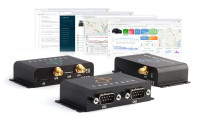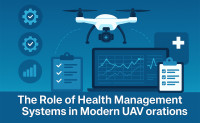
In the rapidly evolving landscape of unmanned aerial vehicles (UAVs), collision detection and avoidance technology represents one of the most critical areas of development. As UAVs become increasingly autonomous and operate in more complex environments, the ability to detect and avoid obstacles has transitioned from a desirable feature to an essential capability that directly impacts operational safety, mission success, and regulatory compliance.
The Fundamentals of Collision Detection
At its core, collision detection for UAVs involves three fundamental processes: sensing the environment, processing sensor data to identify potential obstacles, and executing appropriate avoidance maneuvers. While this conceptual framework remains consistent, the technologies and methodologies employed have undergone significant evolution over the past decade.
Early collision detection systems relied primarily on single-sensor approaches, typically utilizing ultrasonic or infrared proximity sensors with limited range and field of view. These systems provided basic obstacle detection capabilities but were severely constrained by environmental factors such as lighting conditions, weather, and the physical characteristics of potential obstacles.
Modern collision detection systems have transcended these limitations through multi-sensor fusion approaches that combine data from diverse sensing modalities. This evolution has been driven by advances in sensor technology, processing capabilities, and algorithmic sophistication, resulting in systems that provide comprehensive situational awareness across varied operational environments.
Multi-Sensor Fusion: The Foundation of Advanced Detection
The transition to multi-sensor architectures represents perhaps the most significant advancement in collision detection technology. By integrating data from multiple sensor types—each with distinct strengths and limitations—these systems achieve levels of reliability and environmental adaptability that were previously unattainable.
A typical advanced collision detection system might incorporate:
- Visual cameras for high-resolution feature detection and tracking
- Infrared sensors for low-light condition detection
- LiDAR for generating 3D point clouds of the surrounding environment
- Radar for long-range performance and weather penetration
- Ultrasonic sensors for close-range detection of transparent or reflective obstacles
The true innovation lies not merely in deploying multiple sensors but in the sophisticated fusion algorithms that integrate these diverse data streams into a coherent environmental model. These algorithms must account for the varying update rates, resolution characteristics, and error profiles of each sensor type while maintaining real-time performance.
At Invoblaze, our approach to sensor fusion employs a hierarchical processing architecture that balances computational efficiency with detection reliability. Low-level fusion combines raw data from complementary sensors to enhance detection confidence, while high-level fusion integrates processed results from different sensing modalities to create a comprehensive environmental understanding.
Processing Paradigms: From Reactive to Predictive
Early systems operated on a reactive basis, triggering avoidance maneuvers only when obstacles entered a predefined danger zone. While straightforward to implement, this approach provided minimal time for evasive action and often resulted in inefficient flight paths or abrupt maneuvers.
Modern systems employ predictive processing that continuously analyzes the trajectory of the UAV relative to detected obstacles and environmental features. This enables smooth, efficient avoidance maneuvers that minimize disruption to the planned flight path.
This predictive capability relies on sophisticated algorithms that combine deterministic modeling with probabilistic reasoning to account for uncertainties. Machine learning techniques have further enhanced these capabilities by enabling systems to recognize patterns and adapt their models based on experience.
Dynamic Obstacle Handling: The Next Frontier
While static obstacle avoidance has matured, dynamic obstacle detection—such as other aircraft, vehicles, or wildlife—remains a key challenge. Invoblaze addresses this with context-aware prediction models that apply behavioral heuristics to different object types for accurate trajectory forecasting.
Integration with Flight Control Systems
Effective collision detection relies on tight integration with UAV flight control systems. A layered architecture separates strategic mission planning from tactical avoidance, balancing safety with operational efficiency. Risk-aware decision-making further enhances this integration.
Future Directions: Collaborative Detection and Avoidance
Next-generation UAV operations will benefit from collaborative detection approaches, where multiple UAVs and infrastructure share data to extend awareness and optimize traffic flow. Secure, low-latency communication is key, and Invoblaze is actively developing frameworks that support this evolution.
Conclusion
The evolution of collision detection systems mirrors the rise of intelligent UAV autonomy. From multi-sensor fusion to predictive modeling and collaborative networks, these advancements enable safe UAV operation in complex environments. At Invoblaze, we continue to push these boundaries to redefine what’s possible in autonomous aviation.






1 Comments
zxcvxcv